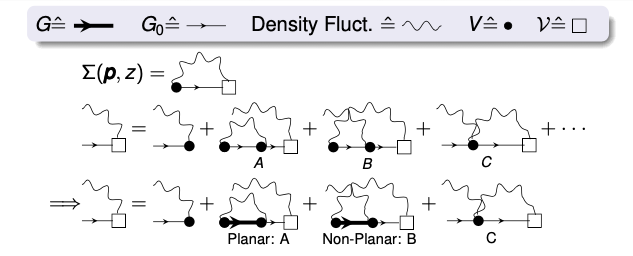Vibrational phenomena in low temperature glass
While the vibrational properties of crystalline solids are well understood in terms of phonons, the vibrational spectra of amorphous solids exhibit incompletely understood anomalies. Generally, there are many more modes presents in glasses, which have a qualitative impact. It has been conjectured, that quasi-localised modes are related to Rayleigh-damping in the hydrodynamic limit and to the Boson-peak, a characteristic excess over the Debye law.
We investigate the low temperature properties of amorphous solids using field theoretical techniques. The first step was analyzing the athermal properties of disordered materials by studying the spectrum of a random matrix. A model proposed by Giorgio Parisi and co-workers. We considered uniformly distributed harmonic oscillators which are pair-wise connected via generic spring functions. It was shown before, that non-planar diagrams are essential to recover the qualitative features of low temperature glasses. Non-planar diagrams are important to correctly describe multiple local scattering events and hence for quasi-localised modes. We managed to derive a self- consistent model that successfully describes all the salient properties of disordered materials i.e. Boson-peak, sound softening and Rayleigh-damping.
Complementary to the field theoretic approach, we numerically analyze the random matrices by means of diagonalization. With the obtained eigenfrequencies and eigenvectors we can calculate quantities like the vibrational density of states, the dynamic structure factor and the dispersion relation. We also probe how excited standing waves are scattered in the disordered systems (see video above). We find good agreement between the numerical results and the theory.

Next, we want to generalize the gained insight to low, but finite temperatures, and include quantum-mechanical effects. One goal is to find a microscopic justification of phenomenological models like the two-states model or the soft-potential model. Generally, the aim is to build up a field theory starting from first principles (for example using the Keldysh formalism) that gives the correct Green’s function for low temperature amorphous solids. We are actively looking for cooperation with many-body theory groups which use field theoretical and numerical techniques.
